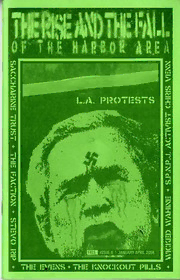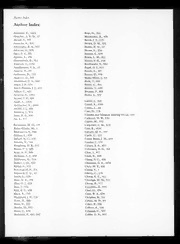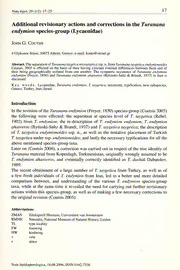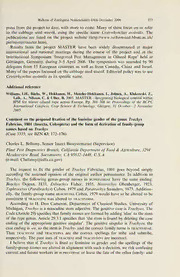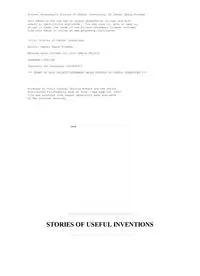
Stories of Useful Inventions by S E Forman PDF
Preview Stories of Useful Inventions by S E Forman
Project Gutenberg's Stories of Useful Inventions, by Samuel Eagle Foreman This eBook is for the use of anyone anywhere at no cost and with almost no restrictions whatsoever. You may copy it, give it away or re-use it under the terms of the Project Gutenberg License included with this eBook or online at www.gutenberg.org/license Title: Stories of Useful Inventions Author: Samuel Eagle Foreman Release Date: October 29, 2012 [EBook #41219] Language: English Character set encoding: ISO-8859-1 *** START OF THIS PROJECT GUTENBERG EBOOK STORIES OF USEFUL INVENTIONS *** Produced by Chris Curnow, Charlie Howard and the Online Distributed Proofreading Team at http://www.pgdp.net (This file was produced from images generously made available by The Internet Archive) cover STORIES OF USEFUL INVENTIONS Guglielmo Marconi Alexander Graham Bell Benjamin Franklin Hudson Maxim Thomas Edison Sir Henry Bessemer Robert Fulton A GROUP OF INVENTORS STORIES OF USEFUL INVENTIONS BY S. E. FORMAN AUTHOR OF "A HISTORY OF THE UNITED STATES," "ADVANCED CIVICS," ETC. decoration NEW YORK THE CENTURY CO. 1911 T Copyright, 1911, by The Century Co. Published September, 1911 PREFACE In this little book I have given the history of those inventions which are most useful to man in his daily life. I have told the story of the Match, the Stove, the Lamp, the Forge, the Steam-Engine, the Plow, the Reaper, the Mill, the Loom, the House, the Carriage, the Boat, the Clock, the Book, and the Message. From the history of these inventions we learn how man became the master of the world of nature around him, how he brought fire and air and earth and water under his control and compelled them to do his will and his work. When we trace the growth of these inventions we at the same time trace the course of human progress. These stories, therefore, are stories of human progress; they are chapters in the history of civilization. And they are chapters which have not hitherto been brought together in one book. Monographs on most of the subjects included in this book have appeared, and excellent books about modern inventions have been written, but as far as I know, this is the first time the evolution of these useful inventions has been fully traced in a single volume. While preparing the stories I have received many courtesies from officers in the Library of Congress and from those of the National Museum. S. E. F. May, 1911. Washington, D. C. CONTENTS PAGE The Foreword ix I The Match 3 II The Stove 13 III The Lamp 28 IV The Forge 38 V The Steam-Engine 54 VI The Plow 73 VII The Reaper 85 VIII The Mill 97 IX The Loom 109 X The House 123 XI The Carriage 144 XII The Carriage (Continued) 156 XIII The Boat 166 XIV The Clock 187 XV The Book 203 XVI The Message 222 A FOREWORD1 hese stories of useful inventions are chapters in the history of civilization and this little book is a book of history. Now we are told by Herodotus, one of the oldest and greatest of historians, that when the writer of history records an event he should state the time and the place of its happening. In some kinds of history—in the history of the world's wars, for example, or in the history of its politics—this is strictly true. When we are reading of the battle of Bunker Hill [v] [vi] [vii] [ix] we should be told precisely when and where the battle was fought, and in an account of the Declaration of Independence the time and place of the declaration should be given. But in the history of inventions we cannot always be precise as to dates and places. Of course it cannot be told when the first plow or the first loom or the first clock was made. Inventions like these had their origin far back in the earliest ages when there was no such person as a historian. And when we come to the history of inventions in more recent times the historian is still sometimes unable to discover the precise time and place of an invention. It is in the nature of things that the origin of an invention should be surrounded by uncertainty and doubt. An invention, as we shall see presently, is nearly always a response to a certain want. The world wants something and it promises a rich reward to one who will furnish the desired thing. The inventor, recognizing the want, sets to work to make the thing, but he conducts his experiments in secret, for the reason that he does not want another to steal his ideas and get ahead of him. We can see that this is true in respect to the flying machine. The first experiments with the flying machine were conducted in secret in out of the way places and pains were taken that the public should know as little as possible about the new machine and about the results of the experiments. The history of the flying machine will of course have to be written, but because of the secrecy and mystery which surrounded the beginnings of the invention it will be extremely difficult for the future historian to tell precisely when the first flying machine was invented or to name the inventor. If it is so difficult to get the facts as to the origin of an invention in our own time, how much more difficult it is to clear away the mystery and doubt which surround the beginnings of an invention in an age long past! In a history of inventions, then, the historian cannot be precise in respect to dates and places. Fortunately this is not a cause for deep regret. It is not a great loss to truth that we cannot know precisely when the first book was printed, nor does it make much difference whether that book was printed in Holland or in Germany. In giving an account of an invention we may be content to treat the matter of time and place broadly, for the story is apt to carry us through a stretch of years that defies computation, a stretch that is immensely longer than the life of any nation. For our purpose these millenniums, these long stretches of time, may be thought of as being divided into three great periods, namely: the primitive, the ancient, and the modern period. Even a division so broad as this is not satisfactory, for in the progress of their inventions all countries have not kept equal step with the march of time. In some things ancient Greece was modern, while in most things modern Alaska is primitive and modern China is ancient. Nevertheless it will be convenient at times in this book to speak of the primitive, the ancient and the modern periods, and it will be useful to regard the primitive period as beginning with the coming of man on earth and extending to the year 5000 B. C.; the ancient period may be thought of as beginning with the year 5000 B. C. and ending with the year 476 A. D., leaving for the modern period the years that have passed since 476 A. D. In tracing the growth of an invention the periods indicated above can serve as a time-guide only for those parts of the world where the course of civilization has taken its way, for invention and civilization have traveled the same road. The region of the world's most advanced civilization includes the lands bordering on the Mediterranean Sea, Central and Northern Europe, the British Isles, North America, South America and Australia. It is within this region that we shall follow the development of whatever invention is under consideration. When speaking of the first forms of an invention, however, it will sometimes be necessary, when an illustration is desired, to draw upon the experience of people who are outside of the wall of civilization. The reason for going outside is plain. The first and simplest forms of the useful inventions have utterly perished in civilized countries, but they still exist among savage and barbarous peoples and it is among such peoples that the first forms must be studied. Thus in the story of the clock, we must go to a far-off peninsula of Southern Asia (p. 190) for an illustration of the beginning of our modern timepiece. Such a departure from the beaten track of civilization does not spoil the story, for as a rule, the rude forms of inventions found among the lowest races of to-day are precisely the same forms that were in use among the Egyptians and Greeks when they were in their lowest state. When studying the history of an invention there are two facts or principles which should ever be borne in mind. The first principle is this: Necessity is the mother of invention. This principle was touched upon when it was said that an invention appears as a response to a want. When the world wants an invention it usually gets it and makes the most of it, but it will have nothing to do with an invention it does not want. The steam-engine was invented two thousand years ago (p. 55) but the world then had no work for steam to do, so the invention attracted little attention and came to naught. About two hundred years ago, however, man did want the services of steam and inventors were not long in supplying the engine that was needed. About a hundred years ago the broad prairie lands of the United States began to be tilled but it was soon found that the vast areas could not be plowed and that the immense crops could not be harvested by the old methods. So improvements upon the plow and the reaper began to be made and in time the steam gang-plow and the complete harvester were invented. When the locomotive first came into use a simple handbrake was used to stop the slow-going trains, but as the size and the speed of trains increased the handbrake became more and more unsatisfactory. Sometimes a train would run as much as a half mile beyond a station before it could be stopped and then when "backed" it would again pass beyond the station. The problem of stopping the train promptly became fully as important as starting it. The problem was solved by the invention of the air-brake. And thus it has been with all the inventions which surround us: necessity has been the mother of them all. The other principle is that a mechanical invention is a growth, or, to state the truth in another way, an invention nearly always is simply an improvement upon a previous invention. The loom, for example, was not invented by a particular person at a particular time; it did not spring into existence in a day with all its parts perfected; it grew, century [x] [xi] [xii] [xiii] [xiv] [xv] D FIG. 2.—PRIMITIVE FIRE- MAKING. THE STICK-AND- GROOVE METHOD. by century, piece by piece. In the stories which will follow the steps in the growth of an invention are shown in the illustrations. These pictures are not for amusement but for study. As you read, examine them carefully and they will teach you quite as much about the growth of the invention as you can be taught by words. STORIES OF USEFUL INVENTIONS THE MATCH id you ever think how great and how many are the blessings of fire? Try to think of a world without fire. Suppose we should wake up some bitter cold morning and find that all the fires in the world were out, and that there was no way of rekindling them; that the art of kindling a fire had been lost. In such a plight we should all soon be shivering with the cold, for our stoves and furnaces could give us no warmth; we should all soon be hungry, for we could not cook our food; we should all soon be idle, for engines could not draw trains, wheels of factories could not turn, and trade and commerce would come to a standstill; at night we would grope in darkness, for we could use neither lamp nor gas nor electric light. It is easy to see that without fire, whether for light or heat, the life of man would be most wretched. There never was a time when the world was without fire, but there was a time when men did not know how to kindle fire; and after they learned how to kindle one, it was a long, long time before they learned how to kindle one easily. In these days we can kindle a fire without any trouble, because we can easily get a match; but we must remember that the match is one of the most wonderful things in the world, and that it took men thousands of years to learn how to make one. Let us learn the history of this familiar little object, the match. Fire was first given to man by nature itself. When a forest is set on fire by cinders from a neighboring volcano, or when a tree is set ablaze by a thunderbolt, we may say that nature strikes a match. In the early history of the world, nature had to kindle all the fires, for man by his own effort was unable to produce a spark. The first method, then, of getting fire for use was to light sticks of wood at a flame kindled by nature—by a volcano, perhaps, or by a stroke of lightning. These firebrands (Fig. 1) were carried to the home and used in kindling the fires there. The fire secured in this way was carefully guarded and was kept burning as long as possible. But the flame, however faithfully watched, would sometimes be extinguished. A sudden gust of wind or a sudden shower would put it out. Then a new firebrand would have to be secured, and this often meant a long journey and a deal of trouble. FIG. 1.—GETTING A MATCH FROM NATURE. In the course of time a man somewhere in the world hit upon a plan of kindling a fire without having any fire to begin with; that is to say, he hit upon a plan of producing a fire by artificial means. He knew that by rubbing his hands together very hard and very fast he could make them very warm. By trial he learned that by rubbing two pieces of dry wood together he could make them very warm. Then he asked himself the question: Can a fire be kindled by rubbing two pieces of wood together, if they are rubbed hard enough? He placed upon the ground a piece of perfectly dry wood (Fig. 2) and rubbed this with the end of a stick until a groove was made. In the groove a fine dust of wood—a kind of sawdust—was made by the rubbing. He went on rubbing hard and fast, and, behold, the dust in the groove began to glow! He placed some dry grass upon the embers and blew upon them with his breath, and the grass burst into a flame.2 Here for the first time a man kindled a fire for himself. He had invented the match, the greatest invention, perhaps, in the history of the world. The stick-and-groove method—as we may call it—of getting a flame was much better than guarding fire and carrying it from place to place; yet it was, nevertheless, a very clumsy method. The wood used had to be perfectly dry, and the rubbing required a vast amount of work and patience. Sometimes it would take hours to produce the spark. After a while—and doubtless it was a very long while—it was found that it was better to keep the end of the stick in one spot and twirl it (Fig. 3) than it was to plow to and fro with it. The twirling motion made a hole in which the heat [xv] [3] [4] [5] [6] FIG. 3.—THE FIRE DRILL. (Simple Form.) FIG. 4.—FIRE DRILL. (Improved Form.) FIG. 5.—STRIKING FIRE. produced by the friction was confined in a small space. At first the drilling was done by twirling the stick between the palms of the hands, but this made the hands too hot for comfort, and the fire-makers learned to do the twirling with a cord or thong3 wrapped around the stick (Fig. 4). You see, the upper end of the stick which serves as a drill turns in a cavity in a mouthpiece which the operator holds between his teeth. If you should undertake to use a fire-drill of this kind, it is likely that your jaws would be painfully jarred. By both the methods described above, the fire was obtained by rubbing or friction. The friction method seems to have been used by all primitive peoples, and it is still in use among savages in various parts of the world. The second step in fire-making was taken when it was discovered that a spark can be made by striking together a stone and a piece of iron ore. Strike a piece of flint against a piece of iron ore known as pyrites, or fire-stone, and you will make sparks fly. (Fig. 5.) Let these sparks fall into small pieces of dried moss or powdered charcoal, and the tinder, as the moss or the charcoal is called, will catch fire. It will glow, but it will not blaze. Now hold a dry splinter in the glowing tinder, and fan or blow with the breath and the splinter will burst into a flame. If you will tip your splinter with sulphur before you place it in the burning tinder, you will get a flame at once. This was the strike-a-light, or percussion, method of making a fire. It followed the friction method, and was a great improvement upon it because it took less work and a shorter time to get a blaze. The regular outfit for fire-making with the strike-a-light consisted of a tinder-box, a piece of steel, a piece of flint, and some splinters tipped with sulphur (Fig. 6). The flint and steel were struck together, and the sparks thus made fell into the tinder and made it glow. A splinter was applied as quickly as possible to the tinder, and when a flame was produced the candle which rested in the socket on the tinder-box was lighted. As soon as the splinter was lighted the cover was replaced on the tinder-box, so as to smother the glowing tinder and save it for another time. FIG. 6.—TINDER BOX, FLINT, STEEL, AND SULPHUR- TIPPED SPLINTERS. The strike-a-light method was discovered many thousands of years ago, and it has been used by nearly all the civilized nations of the world.4 And it has not been so very long since this method was laid aside. There are many people now living who remember when the flint and steel and tinder-box were in use in almost every household. About three hundred years ago a third method of producing fire was discovered. If you should drop a small quantity of sulphuric acid into a mixture of chlorate of potash and sugar, you would produce a bright flame. Here was a hint for a new way of making a fire; and a thoughtful man in Vienna, in the seventeenth century, profited by the hint. He took one of the sulphur-tipped splinters which he was accustomed to use with his tinder-box, and dipped it into sulphuric acid, and then applied it to a mixture of chlorate of potash and sugar. The splinter caught fire and burned with a blaze. Here was neither friction nor percussion. The chemical substances were simply brought together, and they caught fire of themselves; that is to say, they caught fire by chemical action. The discovery made by the Vienna man led to a new kind of match—the chemical match. A practical outfit for fire- making now consisted of a bottle of sulphuric acid (vitriol) and a bundle of splints tipped with sulphur, chlorate of potash, and sugar. Matches of this kind were very expensive, costing as much as five dollars a hundred; besides, they were very unsatisfactory. Often when the match was dipped into the acid it would not catch fire, but would smolder and sputter and throw the acid about and spoil both the clothes and the temper. These dip-splint matches were used in the eighteenth century by those who liked them and could afford to buy them. They did not, however, drive out the old strike-a-light and tinder-box. In the nineteenth century—the century in which so many wonderful things were done—the fourth step in the development of the match was taken. In 1827, John Walker, a druggist in a small English town, tipped a splint with sulphur, chlorate of potash, and sulphid of antimony, and rubbed it on sandpaper, and it burst into flame. The druggist [7] [8] [9] [10] F FIG. 7.—A "BLOCK" OF MATCHES. FIG. 8.—A BOX OF MODERN SAFETY MATCHES. FIG. 1.—THE PRIMITIVE STOVE. had discovered the first friction-chemical match, the kind we use to-day. It is called friction-chemical because it is made by mixing certain chemicals together and rubbing them. Although Walker's match did not require the bottle of acid, nevertheless it was not a good one. It could be lighted only by hard rubbing, and it sputtered and threw fire in all directions. In a few years, however, phosphorus was substituted on the tip for antimony, and the change worked wonders. The match could now be lighted with very little rubbing, and it was no longer necessary to have sandpaper upon which to rub it. It would ignite when rubbed on any dry surface, and there was no longer any sputtering. This was the phosphorus match, the match with which we are so familiar. After the invention of the easily-lighted phosphorus match there was no longer use for the dip-splint or the strike-a-light. The old methods of getting a blaze were gradually laid aside and forgotten. The first phosphorus matches were sold at twenty-five cents a block —a block (Fig. 7) containing a hundred and forty-four matches. They were used by few. Now a hundred matches can be bought for a cent. It is said that in the United States we use about 150,000,000,000 matches a year. This, on an average, is about five matches a day for each person. There is one thing against the phosphorus match: it ignites too easily. If one is left on the floor, it may be ignited by stepping upon it, or by something falling upon it. We may step on a phosphorus match unawares, light it, leave it burning, and thus set the house on fire. Mice often have caused fires by gnawing the phosphorus matches and igniting them. In one city thirty destructive fires were caused in one year by mice lighting matches. To avoid accident by matches, the safety match (Fig. 8) has recently been invented. The safety match does not contain phosphorus. The phosphorus is mixed with fine sand and glued to the side of the box in which the matches are sold. The safety match, therefore, cannot be lighted unless it is rubbed on the phosphorus on the outside of the box. It is so much better than the old kind of phosphorus match that it is driving the latter out of the market. Indeed, in some places it is forbidden by law to sell any kind of match but the safety match. The invention of the safety match is the last step in the long history of fire-making. The first match was lighted by rubbing, and the match of our own time is lighted by rubbing; yet what a difference there is between the two! With the plowing-stick or fire-drill it took strength and time and skill to get a blaze; with the safety match an awkward little child can kindle a fire in a second. And how long it has taken to make the match as good as it is! The steam-engine, the telegraph, the telephone, and the electric light were all in use before the simple little safety match. THE STOVE rom the story of the match you have learned how man through long ages of experience gradually mastered the art of making a fire easily and quickly. In this chapter, and in several which are to follow, we shall have the history of those inventions which have enabled man to make the best use of fire. Since the first and greatest use of fire is to cook food and keep the body warm, our account of the inventions connected with the use of fire may best begin with the story of the stove. The most important uses of fire were taught by fire itself. As the primitive man stood near the flames of the burning tree and felt their pleasant glow, he learned that fire may add to bodily comfort; and when the flames swept through a forest and overtook a deer and baked it, he learned that fire might be used to improve the quality of his food. The hint was not lost. He took a burning torch to his cave or hut and kindled a fire on his floor of earth. His dwelling filled with smoke, but he could endure the discomfort for the sake of the fire's warmth, and for the sake of the toothsomeness of the cooked meats. After a time a hole was made in the roof of the hut, and through this hole the smoke passed out. Here was the first stove. The primitive stove was the entire house; the floor was the fireplace and the hole in the roof was the chimney (Fig. 1). The word "stove" originally meant "a heated room." So that if we should say that at first people lived in their stoves, we should say that which is literally true. Early inventions in cooking consisted in simple devices for applying flame directly to the thing which was to be cooked. The first roasting was doubtless done by fastening the flesh to a pole placed in a horizontal position above the [11] [12] [13] [14] [15] FIG. 2.—PRIMITIVE COOKING. FIG. 3.—A ROMAN BRAZIER. FIG. 4.—A ROMAN HYPOCAUST. fire and supported as is shown in Figure 2.5 The horizontal bar called a spit was originally of wood, but after man had learned to work in metals an iron bar was used. When one side of the flesh was roasted the spit was turned and the other side was exposed to the flames. The spit of the primitive age was the parent of the modern grill and broiler. Food was first boiled in a hole in the ground. A hole was filled with water into which heated stones were thrown. The stones, by giving off their heat, caused the water to boil in a very short time. After the art of making vessels of clay was learned, food was boiled in earthen pots suspended above the fire. The methods of warming the house and cooking the food which have just been described were certainly crude and inconvenient, but it was thousands of years before better methods were invented. The long periods of savagery and barbarism passed and the period of civilization was ushered in, but civilization did not at once bring better stoves. Neither the ancient Egyptians nor the ancient Greeks knew how to heat a house comfortably and conveniently. All of them used the primitive stove—a fire on the floor and a hole in the roof. In the house of an ancient Greek there was usually one room which could be heated when there was need, and this was called the "black-room" (atrium)—black from the soot and smoke which escaped from the fire on the floor. But we must not speak harshly of the ancients because they were slow in improving their methods of heating, for in truth the modern world has not done as well in this direction as might have been expected. In a book of travels written only sixty years ago may be found the following passage: "In Normandy, where the cold is severe and fire expensive, the lace-makers, to keep themselves warm and to save fuel, agree with some farmer who has cows in winter quarters to be allowed to carry on their work in the society of the cattle. The cows would be tethered in a long row on one side of the apartment, and the lace-makers sit on the ground on the other side with their feet buried in the straw." Thus the lace- makers kept themselves warm by the heat which came from the bodies of the cattle; the cows, in other words, served as stoves. This barbarous method of heating was practised in some parts of France less than sixty years ago. The ancient peoples around the Mediterranean may be excused for not making great progress in the art of heating, for their climate was so mild that they seldom had use for fire in the house. Nevertheless there was in use among these people an invention which has in the course of centuries developed into the stove of to-day. This was the brazier, or warming-pan (Fig. 3). The brazier was filled with burning charcoal and was carried from room to room as it was needed. The unpleasant gases which escaped from the charcoal were made less offensive, but not less unhealthy, by burning perfumes with the fuel. The brazier has never been entirely laid aside. It is still used in Spain and in other warm countries where the necessity for fire is rarely felt. The brazier satisfied the wants of Greece, but the colder climate of Rome required something better; and in their efforts to invent something better, the ancient Romans made real progress in the art of warming their houses. They built a fire-room—called a hypocaust—in the cellar, and, by means of pipes made of baked clay, they connected the hypocaust with different parts of the house (Fig. 4). Heat and smoke passed up together through these pipes. The poor ancients, it seems, were forever persecuted by smoke. However, after the wood in the hypocaust was once well charred, the smoke was not so troublesome. The celebrated baths (club-rooms) of ancient Rome were heated by means of hypocausts with excellent results. Indeed, the hypocaust had many of the features and many of the merits of our modern furnace. Its weak feature was that it had no separate pipe to carry away the smoke. But as there were no chimneys yet in the world, it is no wonder there was no such pipe. The Romans made quite as much progress in the art of cooking as they did in the art of heating. Perhaps the world has never seen more skilful cooks than those who served in the mansions of the rich during the period of the Roman Empire (27 B.C.-476 A.D.). In this period the great men at Rome abandoned their plain way of living and became gourmands. One of them wished for the neck of a crane, that he might enjoy for a longer time his food as it descended. This demand for tempting viands developed a race of cooks who were artists in their way. Upon one occasion a king called for a certain kind of fish. The fish could not be had, but the cook was equal to the emergency. "He cut a large turnip to the perfect imitation of the fish desired, and this he fried and seasoned so skilfully that his majesty's taste was exquisitely deceived, and he praised the root to his guests as an excellent fish." Such excellent cooking could not be done on a primitive stove, and along with the improvements in the art of cooking, there was a corresponding improvement at Rome in the art of stove-making. When Rome fell (476 A.D.), many of the best features of her civilization perished with her. Among the things that were lost to the world were the Roman methods of cooking and heating. When the barbarians came in at the front door, the cooks fled from the kitchen. The hardy northerners had no taste for dainty cooking. Hypocausts ceased to be [16] [17] [18] [19] [20] FIG. 5.—A CHIMNEY AND FIREPLACE IN AN OLD ENGLISH CASTLE. FIG. 6.—A STOVE OF THE MIDDLE AGES. FIG. 7.—THE MODERN STOVE. FIG. 8.—AN OLD-FASHIONED FIREPLACE AND OVEN. used, and were no longer built. For several hundred years, in all the countries of Europe, the fireplace was located, as of old, on the floor in the center of the room, while the smoke was allowed to pass out through a hole in the roof. The eleventh century brought a great improvement in the art of heating, and the improvement came from England. About the time of the Conquest (1066) a great deal of fighting was done on the roofs of English fortresses, and the smoke coming up through the hole in the center of the roof proved to be troublesome to the soldiers. So the fire was moved from the center of the floor to a spot near an outside wall, and an opening was made in the wall just above the fire, so that the smoke could pass out. Here was the origin of the chimney. Projecting from the wall above the fire was a hood, which served to direct the smoke to the opening. At first the opening for the smoke extended but a few feet from the fire, but it was soon found that the further up the wall the opening extended the better was the draft. So the chimney was made to run diagonally up the wall as far as possible. The next and last step in the development of the chimney was to make a recess in the wall as a fireplace, and to build a separate structure of masonry—the chimney—for the smoke. By the middle of the fourteenth century chimneys were usually built in this way (Fig. 5). As the fireplace and chimney cleared the house of soot and smoke, they grew in favor rapidly. By the end of the fifteenth century they were found in the homes of nearly all civilized people. The open fireplace was always cheerful, and it was comfortable when you were close to it; but it did not heat all parts of the room equally. That part next to the fireplace might be too warm for comfort, while in another part of the room it might be freezing. About the end of the fifteenth century efforts were made to distribute heat throughout the room more evenly. These efforts led to the invention of the modern stove. We have learned that the origin of the stove is to be sought in the ancient brazier. In the middle ages the brazier in France took on a new form. Here was a fire-box (Fig. 6) with openings at the bottom for drafts of air and arrangements at the top for cooking things. This French warming-pan (réchaud) was the connecting-link between the ancient brazier and the modern stove. All it lacked of being a stove was a pipe to carry off the smoke, and this was added by a Frenchman named Savot, about two hundred years ago. We owe the invention of the chimney to England, but for the stove we are indebted to France. The Frenchman built an iron fire-box, with openings for drafts, and connected the box with the chimney by means of an iron flue or pipe. Here was a stove which could be placed in the middle of the room, or in any part of the room where it was desirable, and which would send out its heat evenly in all directions. The first stoves were, of course, clumsy and unsatisfactory; but inventors kept working at them, making them better both for cooking and for heating. By the middle of the nineteenth century the stove was practically what it is to-day (Fig. 7). Stoves proved to be so much better than fireplaces, that the latter were gradually replaced in large part by the former. Our affection, however, for a blazing fire is strong, and it is not likely that the old-fashioned fireplace (Fig. 8) will ever entirely disappear. The French stove just described is intended to heat only one room. If a house with a dozen rooms is to be heated, a dozen stoves are necessary. About one hundred years ago there began to appear an invention by which a house of many rooms could be heated by means of one stove. This invention was the furnace. Place in the cellar a large stove, and run pipes from the stove to the different rooms of the house, and you have a furnace (Fig. 9). Doubtless we got our idea of the furnace from the Roman hypocaust, although the Roman invention had no special pipe for the smoke. The first furnaces sent out only hot air, but in recent years steam or hot water is sent out through the pipes to radiators, which are simply secondary stoves set up in convenient places and at a distance from the source of the heat, the furnace in the cellar. Furnaces were invented for the purpose of heating large buildings, but they are now used in ordinary dwellings. [21] [22] [23] [24] [25] [26] N FIG. 1.—A FIREFLY LAMP. FIG. 2.—A BURNING STICK WAS THE FIRST LAMP. FIG. 9.—A MODERN FURNACE. In its last and most highly developed form, the stove appears not only without dust and smoke, but also without even a fire in the cellar. The modern electric stove, of course, is meant. Pass a slight current of electricity through a piece of platinum wire, and the platinum becomes hot. You have made a diminutive electric stove. Increase the strength of your current and pass it through something which offers greater resistance than the platinum, and you get more heat. The electric stove is a new invention, and at present it is too expensive for general use, although the number of houses in which it is used is rapidly increasing, and in time it may drive out all other kinds of stoves. It will certainly drive all of them out if the cost of electricity shall be sufficiently reduced; for it is the cleanest, the healthiest, the most convenient, and the most easily controlled of stoves. THE LAMP ext to its usefulness for heating and cooking, the greatest use of fire is to furnish light to drive away darkness. Man is not content, like birds and brutes, to go to sleep at the setting of the sun. He takes a part of the night-time and uses it for work or for travel or for social pleasures, or for the improvement of his mind, and in this way adds several years to life. He could not do this if he were compelled to grope in darkness. When the great source of daylight disappears he must make light for himself, for the sources of night-light—the moon and stars and aurora borealis and lightning—are not sufficient to satisfy his wants. In this chapter we shall follow man in his efforts to conquer darkness, and we shall have the story of the lamp. We may begin the story with an odd but interesting kind of lamp. The firefly or lightning-bug which we see so often in the summer nights was in the earliest time brought into service and made to shed its light for man. Fireflies were imprisoned in a rude box—in the shell of a cocoanut, perhaps, or in a gourd—and the light of their bodies was allowed to shoot out through the numerous holes made in the box. We must not despise the light given out by these tiny creatures. "In the mountains of Tijuca," says a traveler, "I have read the finest print by the light of one of these natural lamps (fireflies) placed under a common glass tumbler (Fig. 1), and with distinctness I could tell the hour of the night and discern the very small figures which marked the seconds of a little Swiss watch." Although fireflies have been used here and there by primitive folk, they could hardly have been the first lamp. Man's battle with darkness really began with the torch, which was lighted at the fire in the cave or in the wigwam and kept burning for purposes of illumination. A burning stick was the first lamp (Fig. 2). The first improvement in the torch was made when slivers or splinters of resinous or oily wood were tied together and burned. We may regard this as a lamp which is all wick. This invention resulted in a fuller and clearer light, and one that would burn longer than the single stick. A further improvement came when a long piece of wax or fatty substance was wrapped about with leaves. This was something like a candle, only the wick (the leaves) was outside, and the oily substance which fed the wick was in the center. In the course of time it was discovered that it was better to smear the grease on the outside of the stick, or on the outside of whatever was to be burned; that is, that it was better to have the wick inside. Torches were then made of rope coated with resin or fat, or of sticks or splinters smeared with grease; here the stick resembled the wick of the candle as we know it to-day, and the coating of fat corresponded to the tallow or paraffin. Rude candles made of oiled rope or of sticks smeared with fat were invented in primitive times, and they continued to be used for thousands of years after men [27] [28] [29] [30] FIG. 3.—THE CANDLE. FIG. 4.—A SHELL FILLED WITH OIL AND USED AS A LAMP. FIG. 6.—AN ANCIENT LAMP. FIG. 7.—AN ARGAND were civilized. In the dark ages—and they were dark in more senses than one—torch-makers began to wrap the central stick first with flax or hemp and then place around this a thick layer of fat. This torch gave a very good light, but about the time of Alfred the Great (900 A.D.) another step was taken: the central stick was left out altogether, and the thick layer of fat or wax was placed directly around the wick of twisted cotton. All that was left of the original torch—the stick of wood —was gone. The torch had developed into the candle (Fig. 3). The candles of to-day are made of better material than those of the olden time, and they are much cheaper; yet in principle they do not differ from the candles of a thousand years ago. I have given the development of the candle first because its forerunner, the torch, was first used for lighting. But it must not be forgotten that along with the torch there was used, almost from the beginning, another kind of lamp. Almost as soon as men discovered that the melted fat of animals would burn easily —and that was certainly very long ago—they invented in a rude form the lamp from which the lamp of to-day has been evolved. The cavity of a shell (Fig. 4) or of a stone, or of the skull of an animal, was filled with melted fat or oil, and a wick of flax or other fibrous material was laid upon the edge of the vessel. The oil or grease passed up the wick by capillary action,6 and when the end of the wick was lighted it continued to burn as long as there were both oil and wick. This was the earliest lamp. As man became more civilized, instead of a hollow stone or a skull, an earthen saucer or bowl was used. Around the edge of the bowl a gutter or spout was made for holding the wick. In the lamp of the ancient Greeks and Romans the reservoir which held the oil was closed, although in the center there was a hole through which the oil might be poured. Sometimes one of these lamps would have several spouts or nozzles. The more wicks a lamp had, of course, the more light it would give. There is in the museum at Cortona, in Italy, an ancient lamp which has sixteen nozzles. This interesting relic (Fig. 5) was used in a pagan temple in Etruria more than twenty-five hundred years ago. FIG. 5.—AN ETRUSCAN LAMP 2500 YEARS OLD. Lamps such as have just been described were used among the civilized peoples of the ancient world, and continued to be used through the Middle Ages far into modern times. They were sometimes very costly and beautiful (Fig. 6), but they never gave a good light. They sent out an unpleasant odor, and they were so smoky that they covered the walls and furniture with soot. The candle was in every way better than the ancient lamp, and after the invention of wax tapers—candles made of wax—in the thirteenth century, lamps were no longer used by those who could afford to buy tapers. For ordinary purposes and ordinary people, however, the lamp continued to do service, but it was not improved. The eighteenth century had nearly passed, and the lamp was still the unsatisfactory, disagreeable thing it had always been. Late in the eighteenth century the improvement came. In 1783 a man named Argand, a Swiss physician residing in London, invented a lamp that was far better than any that had ever been made before. What did Argand do for the lamp? Examine an ordinary lamp in which coal-oil is burned. The chimney protects the flame from sudden gusts of wind and also creates a draft of air,7 just as the fire-chimney creates a draft. Argand's lamp (Fig. 7) was the first to have a chimney. Look below the chimney and you will see open passages through which air may pass upward and find its way to the wick. Notice further that as this draft of air passes upward it is so directed that, when the lamp is burning, an extra quantity of air plays directly upon the wick. Before Argand, the wick received no supply of air. Now notice—and this is very important—that the wick of our modern lamp is flat or circular, but thin. The air in abundance plays upon both sides of the thin wick, and burns it without making smoke. Smoke is simply half-burned particles (soot) of a burning substance. The particles pass off half-burned because enough air has not been supplied. Now Argand, by making the wick thin and by causing plenty of air to rush into the flame, caused all the wick to be burned and thereby [31] [32] [33] [34] [35] A LAMP. FIG. 8.—THE GAS JET. FIG. 9.—AN EARLY ARC LAMP. caused it to burn with a white flame. After the invention of Argand, the art of lamp-making improved by leaps and by bounds. More progress was made in twenty years after 1783 than had been made in twenty centuries before. New burners were invented, new and better oils were used, and better wicks made. But all the new kinds of lamps were patterned after the Argand. The lamp you use at home may not be a real Argand, but it is doubtless made according to the principles of the lamp invented by the Swiss physician in 1783. Soon after Argand invented his lamp, William Murdock, a Scottish inventor, showed the world a new way of lighting a house. It had long been known that fat or coal, when heated, gives off a vapor or gas which burns with a bright light. Indeed, it is always a gas that burns, and not a hard substance. In the candle or in the lamp the flame heats the oil which comes up to it through the wick and thus causes the oil to give off a gas. It is this gas that burns and gives the light. Now Murdock, in 1797, put this principle to a good use. He heated coal in a large vessel, and allowed the gas which was driven off to pass through mains and tubes to different parts of his house. Wherever he wanted a light he let the gas escape at the end of the tube (Fig. 8) in a small jet and lighted it. Here was a lamp without a wick. Murdock soon extended his gas-pipes to his factories, and lighted them with gas. As soon as it was learned how to make gas cheaply, and conduct it safely from house to house, whole cities were rescued from darkness by the new illuminant. A considerable part of London was lighted by gas in 1815. Baltimore was the first city in the United States to be lighted by gas. This was in 1821. The gas-light proved to be so much better than even the best of lamps, that in towns and cities almost everybody who could afford to do so laid aside the old wick-lamp and burned gas. About 1876, however, a new kind of light began to appear. This was the electric light. The powerful arc light (Fig. 9), made by the passage of a current of electricity between two carbon points, was the first to be invented. This gave as much light as a hundred gas-jets or several hundred lamps. Such a light was excellent for lighting streets, but its painful glare and its sputtering rendered it unfit for use within doors. It was not long, however, before an electric light was invented which could be used anywhere. This was the famous Edison's incandescent or glow lamp (Fig. 10), which we see on every hand. Edison's invention is only a few years old, yet there are already more than thirty million incandescent lamps in use in the United States alone. FIG. 10.—AN INCANDESCENT ELECTRIC LIGHT. The torch, the candle, the lamp, the gas-light, the electric light,—these are the steps of the development of the lamp. And how marvelous a growth it is! How great the triumph over darkness! In the beginning a piece of wood burns with a dull flame, and fills the dingy wigwam or cave with soot and smoke; now, at the pressure of a button, the house is filled with a light that rivals the light of day, with not a particle of smoke or soot or harmful gas. Are there to be further triumphs in the art of lighting? Are we to have a light that shall drive out the electric light? Only time can tell. THE FORGE fter men had learned how to use fire for cooking and heating and lighting they slowly learned how to use it when working with metals. In the earliest times metals were not used. For long ages stone was the only material that man could fashion and shape to his use. During this period, sometimes called the "stone age," weapons were made of stone; dishes and cooking utensils were made of stone; and even the poor, rude tools of the age were made of stone (Fig. 1). In the course of time man learned how to make his implements and weapons of metals as well as of stone. It is generally thought that bronze was the first metal to be used and that the "stone age" was followed directly by the "bronze age," a period when all utensils, weapons, and tools were made of bronze (Fig. 2). It is easy to believe that bronze was used before iron, for bronze is made of a mixture of tin and copper and these two metals are often found in their pure or natural state. Whenever primitive man, therefore, found pieces of pure copper and tin, he could take the [36] [37] [38] FIG. 1.—IMPLEMENTS OF THE STONE AGE. FIG. 2.—IMPLEMENTS OF THE BRONZE AGE. FIG. 4.—BELLOWS WORKED BY THE FEET. FIG. 5.—THE WOODEN BELLOWS. two metals and by melting them could easily mix them and make bronze of them. This bronze he could fashion to his use. There is no doubt that he did this at a very early age. In nearly all parts of the world there are proofs that in primitive times, many articles were made of bronze. If primitive man were slow to learn the use of iron it was not because this metal was scarce, for iron is everywhere. "Wherever, as we go up and down, we see a red-colored surface, or a reddish tint upon the solid substances of the earth, we see iron—the bank of red clay, the red brick, the red paint upon the house wall, the complexion of rosy youth, or my lady's ribbon. Even the rosy apple derives its tint from iron which it contains."8 But although iron is so abundant it is seldom found in its pure or natural state. It is nearly always mixed with other substances, the mixture being known as iron ore. Primitive man could find copper and tin in their pure state but the only pure iron he could find was the little which fell from heaven in the form of meteors, and even this was not perfectly pure for meteoric iron is also mixed slightly with other metals. The iron which lay about primitive man in such abundance was buried and locked tightly in an ore. To separate the iron from the other substances of the ore was by no means an easy thing to do. Iron can best be extracted from the ore by putting the ore in a fire and melting out the iron. Place some iron ore in a fire and if the fire is hot enough—and it must be very hot indeed—the iron will leave the ore and will gather into a lump at the bottom of the fire. To separate the iron from its ore in this way is to make iron. When and where man first learned the secret of making iron is of course unknown. A camp-fire in some part of the world may have shown to man the first lump of iron, or a forest fire sweeping along and melting ores in its path may have given the first hint for the manufacture of iron. Iron making at first doubtless consisted in simply melting the ore in an open heap of burning wood or charcoal, for charcoal is an excellent fuel for smelting (melting) ores. But this open-fire method was wasteful and tedious and at a very early date the smelting of the ore was done in a rude sort of a furnace. A hole ten or twelve feet deep was dug in the...
The list of books you might like

Better Than the Movies

Shatter Me Complete Collection (Shatter Me; Destroy Me; Unravel Me; Fracture Me; Ignite Me)

The Sweetest Oblivion (Made Book 1)

Atomic Habits James Clear

(2020)恋练有词:考研英语词汇识记与应用大全
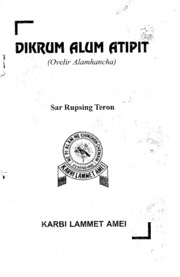
Dikrum Alum Atipit

Transforming later lives
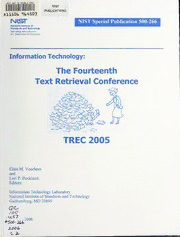
The fourteenth text retrieval conference TREC 2005

Україна – хроніка ХХ століття. 1986-1990 роки. Довідкове видання

Tafseer E Fahm E Quran Vol 1
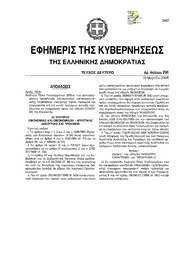
Greek Government Gazette: Part 2, 2006 no. 291

Kickin' It (Red Card)

The Brooklyn Paper Volume 29 Issue 48

DTIC ADA483967: Who's in Charge? New Challenges in Homeland Defense and Homeland Security
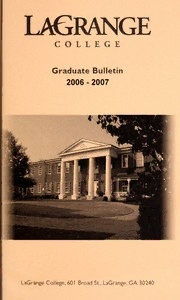
Graduate Bulletin 2006-2007, LaGrange College, LaGrange, Georgia
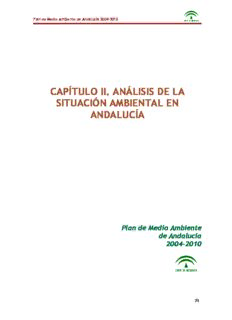
capítulo ii. análisis de la situación ambiental en andalucía

Sørvik Gravlund

Greek Government Gazette: Part 7, 2006 no. 700


